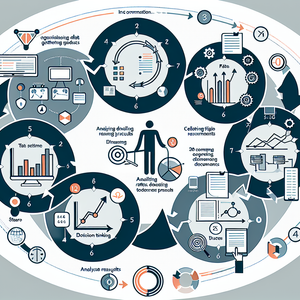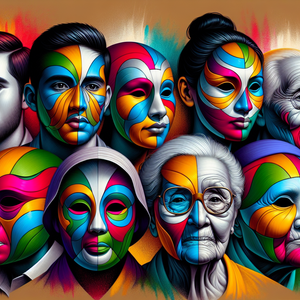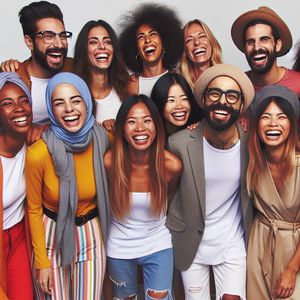The Future of Fashion: AI-Powered Visual Search

Visual search technology utilizes AI and machine learning algorithms to analyze visual elements within images, providing users with relevant product recommendations based on their likeness. Unlike traditional search methods that depend on keyword input, visual search addresses the inherently visual nature of fashion, making it easier for consumers to find specific items that align with their style preferences. This technology has gained traction due to its ability to bridge the gap between inspiration and purchase. As consumers increasingly turn to social media platforms and digital media for fashion inspiration, the need for a seamless transition from visual discovery to purchase has never been more critical.
Enhancing the Shopping Experience
The most significant advantage of AI-powered visual search lies in its capacity to enhance the overall shopping experience. For instance, if a consumer encounters a striking dress on a social media platform, they can simply upload an image of that dress on a retailer's website. The visual search tool will analyze the image and provide recommendations for similar clothing items available for purchase. This streamlined process not only saves consumers time but also increases their engagement and satisfaction. Moreover, visual search technology allows retailers to tap into consumer behavior in real-time, gaining insights into trending styles and preferences. This information can be invaluable for tailoring marketing strategies and optimizing inventory.
Case Studies of Success
Several fashion brands have successfully implemented AI-powered visual search, demonstrating its potential to drive engagement and sales. ASOS, a prominent online fashion retailer, has integrated a visual search feature that enables users to find clothing items by uploading images. This initiative has significantly improved user interaction on their platform, resulting in higher conversion rates. By leveraging visual search, ASOS has created a more engaging shopping experience that resonates with their tech-savvy customer base. Forever 21 has also harnessed the power of visual search technology to enhance product discovery. By allowing customers to upload images to find similar items, the brand has created a more intuitive shopping experience. This innovative approach has led to improved customer retention and loyalty, showcasing the effectiveness of visual search in building long-term relationships with consumers. Pinterest has taken visual search a step further by integrating it into their platform through features like Pinterest Lens. Users can photograph an outfit they admire and use the tool to discover similar styles or products from various retailers. This not only drives traffic to e-commerce sites but encourages users to explore new brands and styles they might not have encountered otherwise.
The Competitive Edge
As competition in the fashion industry intensifies, adopting AI-powered visual search can provide retailers with a significant edge. Brands that embrace this technology position themselves as forward-thinking innovators. By offering personalized recommendations and streamlining the shopping process, retailers can differentiate themselves from those relying solely on traditional methods. Additionally, visual search can enhance inventory management by analyzing consumer preferences and trends. Retailers can make informed decisions about stock levels and new product lines, ultimately leading to improved sales performance and customer satisfaction.
The future of fashion is intricately linked to technological advancements, with AI-powered visual search at the forefront of this evolution. By enabling consumers to discover clothing and accessories that resonate with their personal style, visual search technology enhances the shopping experience and fosters greater engagement. The success stories of brands like ASOS and Forever 21 illustrate how embracing this technology not only meets the evolving demands of consumers but also positions retailers for success in a competitive landscape. As visual search technology continues to develop, it promises to redefine how we shop, making the journey of finding the perfect outfit easier, more enjoyable, and more personalized than ever before. The potential for AI agents that facilitate visual search further underscores the transformative impact of technology on the fashion industry, suggesting a future where shopping is not just a task but an engaging and inspiring experience.
AI Product Manager (Visual Search)
ASOS, Zalando, Shopify
Core Responsibilities
Lead the development and implementation of visual search features on e-commerce platforms.
Collaborate with engineers and data scientists to refine algorithms for improved image recognition and user experience.
Analyze user behavior and feedback to guide product enhancements and prioritize feature updates.
Required Skills
Strong understanding of AI and machine learning technologies, particularly in image processing.
Experience in product management, preferably within the fashion or e-commerce sectors.
Excellent communication skills for cross-functional team collaboration.
Data Scientist (Computer Vision)
Pinterest, Forever 21, Amazon
Core Responsibilities
Develop and optimize computer vision algorithms to enhance visual search capabilities.
Conduct experiments to evaluate the effectiveness of different algorithms on image recognition accuracy.
Work with cross-functional teams to integrate visual search technology into customer-facing applications.
Required Skills
Proficiency in programming languages such as Python or R, with a focus on computer vision libraries (e.g., OpenCV, TensorFlow).
Experience in handling large datasets and conducting statistical analysis.
Familiarity with fashion-related datasets and understanding of consumer trends is a plus.
User Experience (UX) Designer (E-Commerce)
ASOS, Zalando, Shopify
Core Responsibilities
Design intuitive user interfaces for visual search features, ensuring seamless integration with existing e-commerce platforms.
Conduct user research and usability testing to gather insights on customer interactions with visual search tools.
Create wireframes, prototypes, and user flows that prioritize accessibility and user engagement.
Required Skills
Strong portfolio showcasing UX/UI design work, particularly in e-commerce or retail applications.
Proficiency in design tools such as Sketch, Figma, or Adobe XD.
Understanding of user-centered design principles and experience with responsive design.
Digital Marketing Specialist (Fashion Tech)
Pinterest, Forever 21, H&M
Core Responsibilities
Develop and execute digital marketing strategies that leverage AI-powered visual search to enhance customer engagement.
Collaborate with product and design teams to create campaigns that highlight visual search capabilities.
Monitor performance metrics and adjust marketing tactics to maximize reach and conversion rates.
Required Skills
Experience in digital marketing, particularly in the fashion or technology sectors.
Proficiency in analytics tools (e.g., Google Analytics, SEMrush) to measure campaign performance.
Strong copywriting and content creation skills to convey the benefits of visual search technology.
Fashion Technologist (Retail Innovation)
ASOS, Zalando, major fashion retailers embracing digital transformation
Core Responsibilities
Research and evaluate emerging technologies, including AI and machine learning, for application in the fashion retail space.
Collaborate with design and merchandising teams to identify opportunities for technology integration that enhances consumer experiences.
Develop prototypes and pilot programs to test innovative solutions in real-world settings.
Required Skills
Background in fashion design or merchandising combined with technical expertise in emerging technologies.
Strong analytical skills to assess the impact of technology on consumer behavior and sales.
Excellent communication skills to present findings and recommendations to stakeholders.


